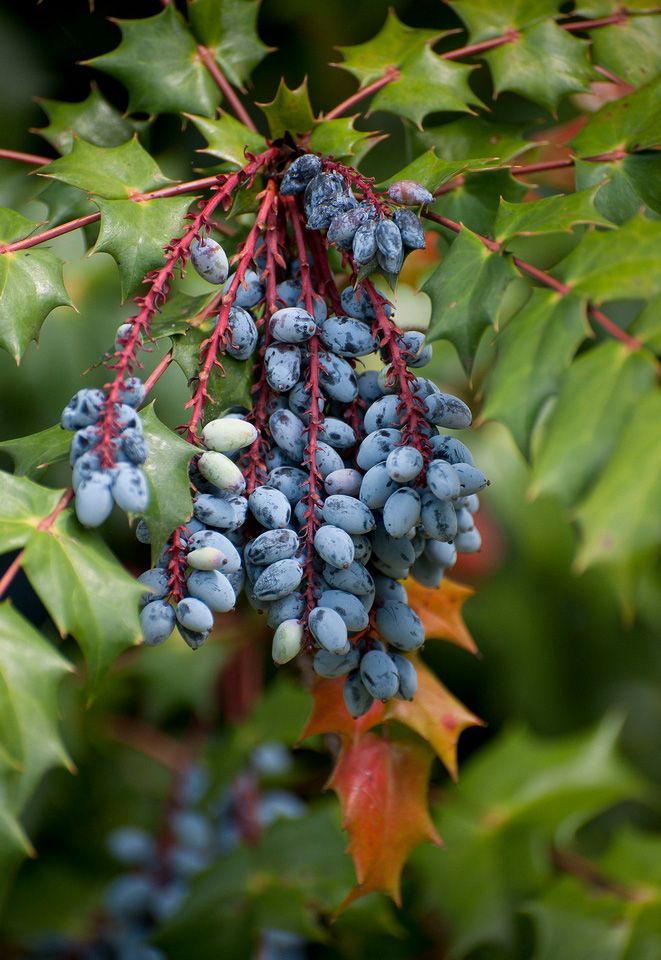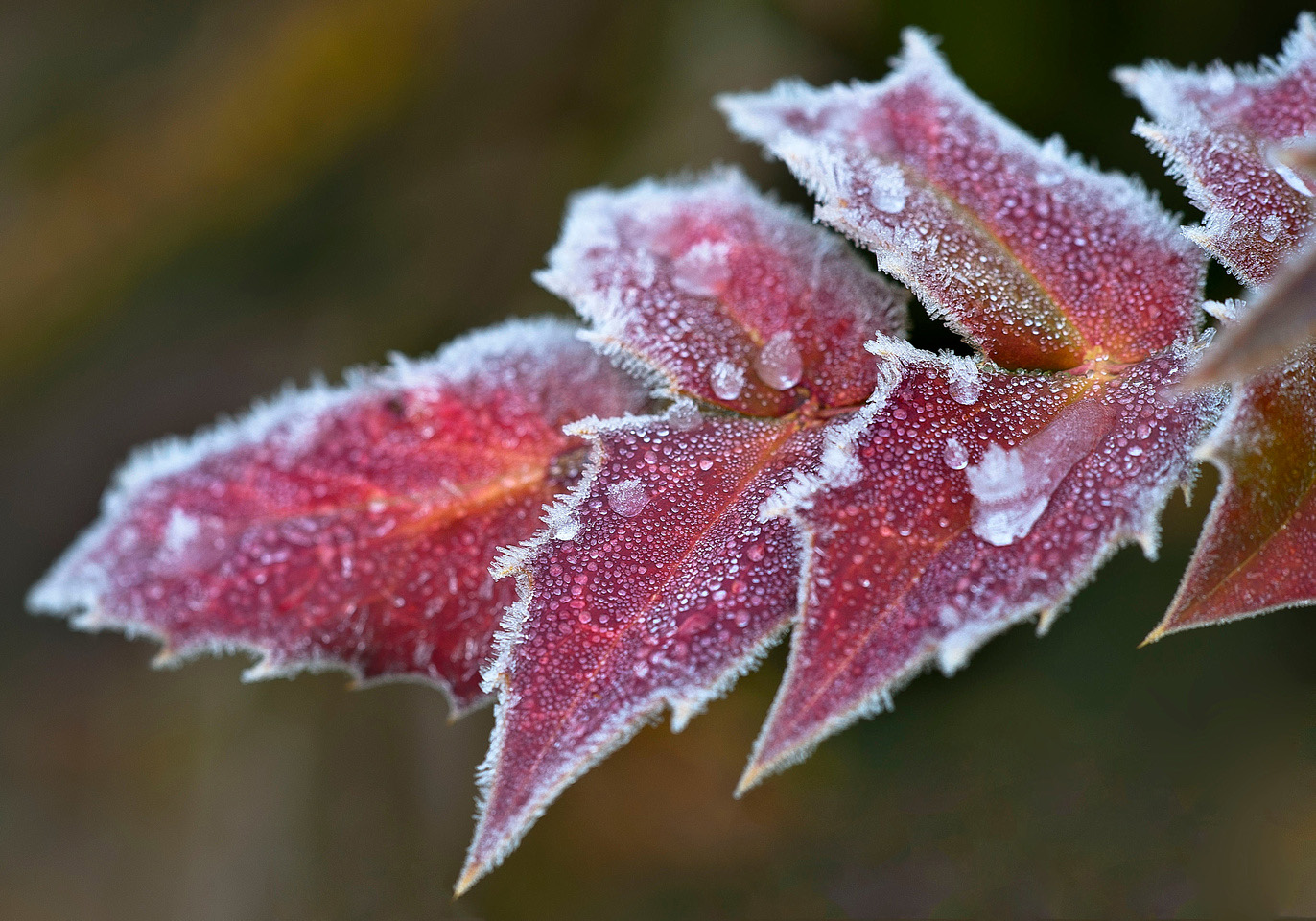Oregon Grape Mystifies as it Beautifies
By Grace Chapman, director of horticulture & Lynn Kirk, public relations writer, Lewis Ginter Botanical Garden
Which is it: Oregon grape, Oregon holly-grape, Oregon grape-holly or Oregon grape? Take your pick, since all these references are acceptable, with or without the dash. But don’t let the names fool you, since the Oregon grape is not exclusive to Oregon, its fruits are not true grapes and it’s not a holly. Botanically it’s classified in the Mahonia genus within the Berberidaceae (barberry) family. Horticulturally it’s a dynamic, bold-textured evergreen with year-round interest.
“Berries, flowers, interesting leaves and seasonal color are hard to find all in one plant, but the Oregon grape has them all,” said Claire Terry, horticulturist at Lewis Ginter Botanical Garden. “It’s an exotic-looking shrub that has some amazing features.”
Depending on the variety, the Oregon grape’s size ranges from creeping groundcovers and compact dwarfs to tall uprights that can reach 10 feet high at maturity. The cane-like branches support long compound leaves that sometimes grow up to 12 inches in length, each with rows of smaller leaflets along a central rib. Similar to hollies (hence the confusion), the leaves are leathery, spiny and quite prickly. A bright, glossy green when they emerge, they gradually darken to a rich burgundy-bronze by winter, adding depth to the nature’s color palate.
The Oregon grape provides another burst of color through its distinctive flowers. Winter to early spring (depending on the variety, zone and weather), whirls of cheerful yellow flowers accent the shrub with eye-catching beauty and light fragrance. In the months to come, berries form in grape-like clusters, eventually ripening to a dusty-blue hue. Though sour and seedy, they’re a welcome treat for birds and other wildlife.
“The stalks make unusual arrangements, too,” said Terry. “When you cut them, they’re mustard-yellow inside – an amazing color!” For these reasons and more, the Oregon grape is a popular addition to landscapes, property borders and natural areas in Zones 5 to 9.
___
Attributes of the Oregon grape
• Native plant of northwest America
• Distinctive, dramatic form
• Shade tolerant
• Adapted to various soil conditions
• Easy maintenance
• Drought tolerant
• Insect resistant
__
Rejuvenate through pruning
To encourage new growth or to control size, the Oregon holly may be pruned after its fruits are finished and following threat of frost. The wood is exceptionally hard, so a handsaw or good lopper is recommended. First, remove about one-third of the shrub’s old, woody canes by cutting them to the ground. Trim remaining stems just above the leaf joint (where the leaf attaches to the stem) at different heights if your preference is a well-rounded form. You can also leave growth at the shrub’s base if a bushy look is desired. Oregon grape spreads by underground runners as well as seeds dropped by wildlife, so it’s best to locate the shrub where fillers are needed or hardscapes contain it.
Editor’s Note: This article first published in the Richmond Times-Dispatch on January 6, 2013

